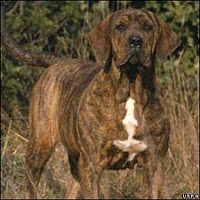An estimated 6.5 million dogs in the UK are suffering from osteoarthritis and the number of pets diagnosed in the last 10 years has increased, which is thought to be linked in the increasing number of obese pets. Certain breeds of dogs and cats are quite commonly affected by
inherited anatomical joint disorders (e.g. hip dysplasia) and
osteoarthritis may develop as a consequence of the abnormal joint
alignment.
What is it?
Aka degenerative joint disease it is the wear and tear of synovial (movable) joints. It is caused by the erosion of cartilage in joints and increases with age. It is not curable but can be managed to reduce further pain and erosion.
Symptoms:
A common early warning sign of osteoarthritis is a reduction in your
pet’s activity level, or an aversion to certain physical activities.
Other early warning signs include:
- Difficulty getting up from a prone position
- Difficulty climbing stairs/getting in or out of a car
- Reduced play or exercise time
- Lying down more than usual
- Stiffness or lameness that disappears with exercise
- Persistent limping or lameness
It is harder to spot the symptoms in cats and so many do go undiagnosed.
Management:
- Exercise- short and often. 10 minute walks 4 times a day is more beneficial than an hour walk once a day.
- Visit your vet for anti-inflammatory drugs
- Hydrotherapy is good as it has the benefits of exercise and aids weight loss but doesn't but the strain of body weight on the joints.
- WEIGHT MANAGEMENT- the most important because the decrease in exercise levels will cause weight gain and that puts more pressure on joints causing more pain and as the diagram above portrays it is a vicious cycle.
- Supplements: There is a huge variety of supplements available for both dogs and cats, but the ones most widely regarded as being beneficial are those that contain glucosamine, chondroitin sulphate and/or essential fatty acids. Glucosamine and chondroitin are normal constituents of articular cartilage and are essential for the repair of joints, whilst essential fatty acids have a general anti-inflammatory effect. These products are most commonly available in the form of tablets or capsules, but there are a few special 'osteoarthritis diets' available for both dogs and cats which are designed as complete foods. Green lipped muscles from New Zealand have also been proven very effective.
- Cats are more difficult to manage but often have a tendency just to do what they feel like when it comes to exercise. Jumping up can be difficult in cats with osteoarthritis, so have everything your cat needs (food, water, litter tray) at ground level.























